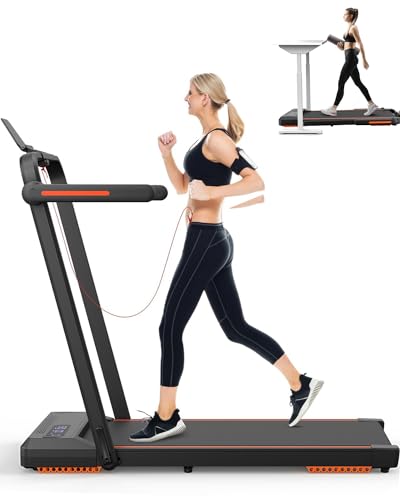
Buy A Treadmill
Add a review FollowOverview
-
Founded Date July 25, 2012
-
Sectors Home Health Aides & Caregivers
-
Posted Jobs 0
-
Viewed 10
Company Description
10 Healthy Habits To Use Walking Machine

The Walking Machine: A Comprehensive Guide to Your Fitness Companion
In today’s busy world, where time is a luxury, maintaining a consistent exercise regimen can be an obstacle. For many, a walking machine– commonly known as a treadmill– works as a perfect fitness buddy. This post supplies an in-depth take a look at walking machines, including their benefits, types, maintenance ideas, and regularly asked questions.
Why Choose a Walking Machine?
Walking machines offer a useful and efficient method to incorporate cardiovascular exercise into everyday life. Here are a number of essential advantages:
- Convenience: Walking machines permit individuals to exercise anytime, despite weather condition conditions or time restrictions. They are perfect for busy schedules.
- Adaptability: Users can stroll, jog, or perform at their own speed and intensity.
- Safety: Walking machines present a lower threat of injury compared to outside walking or running, particularly for newbies or those recuperating from injuries.
- Tracking Progress: Many treadmills come with built-in screens that track metrics like speed, distance, and calories burned.
Kinds Of Walking Machines
When thinking about a walking machine, it’s vital to choose the best type based upon private physical fitness goals and area restrictions. Below are the primary types of walking machines:
| Type | Description |
|---|---|
| Handbook Treadmills | These machines do not have a motor, and users need to walk or go to turn the belt. |
| Electric Treadmills | Powered by an electric motor, allowing users to set the speed and slope easily. |
| Folding Treadmills | Designed for easy storage, these treadmills can be folded up when not in use. |
| Desk Treadmills | Suitable for a double work and exercise environment, these compact machines enable walking while working. |
| Incline Trainers | These enable users to replicate uphill walking, enhancing exercise strength and calorie burn. |
Selecting the Right Walking Machine
Picking the ideal walking machine can considerably affect motivation and effectiveness. Here are some aspects to consider:
Key Features to Look For
- Motor Power: A powerful motor makes sure a smooth and consistent exercise. For periodic walkers, a 1.5 HP motor is usually enough; for heavier use, look for 3.0 HP and above.
- Belt Size: A broader and longer belt provides more space for a comfortable stride. Requirement sizes vary from 16 inches large and 50 inches long.
- Incline Options: Adjustable incline settings can simulate walking or running uphill, increasing the strength of the exercise.
- Shock Absorption: Good shock absorption lowers the risk of joint injuries and enhances comfort.
- Console Features: Look for built-in workouts, heart rate monitors, and connection functions like Bluetooth for a more interesting experience.
Budget plan Considerations
Walking machines can be found in a vast array of rates, depending upon functions and building quality. Here’s a rough budget plan breakdown:
| Price Range | Functions |
|---|---|
| Under ₤ 300 | Basic handbook or small electric treadmills with limited features. |
| ₤ 300 – ₤ 700 | More sophisticated electric treadmills with incline, medium power motors, and much better service warranties. |
| ₤ 700 – ₤ 1500 | Top quality electric treadmills with larger built-in displays, comprehensive functions, and guarantees. |
| ₤ 1500 and above | High Quality-end designs providing advanced technology, functions, and durable building for severe physical fitness enthusiasts. |
Upkeep Tips for Your Walking Machine
To guarantee durability and optimal performance of a walking machine, consider the following upkeep tips:
- Regular Cleaning: Dust and sweat can accumulate on the machine and the belt. Clean down the surface areas and tidy the belt frequently.
- Lubrication: Depending on the design, lubing the running belt periodically can prevent wear and tear. Check the manufacturer standards for recommended lubrication schedules.
- Evaluation: Periodically inspect the machine for loose screws or worn parts. Tighten and replace as needed.
- Calibration: Occasionally, check the calibration of your machine’s metrics to ensure they offer accurate data.
- Proper Use: Follow the producer’s recommendations for weight limits and functional standards.
FAQs About Walking Machines
1. Are walking machines a good exercise?
Yes, walking machines offer an exceptional cardiovascular exercise, can assist with weight-loss, and improve general health.
2. How typically should I use a walking machine?
Go for a minimum of 150 minutes of moderate-intensity aerobic activity each week, which can quickly be attained with regular sessions on a walking machine.
3. Can I slim down on a walking machine?
Yes, integrating a walking machine regimen into a healthy diet can promote weight loss, specifically if combined with periods and incline training.
4. Is it safe for elders to use a walking machine?
Yes, walking machines can be safe for seniors with low-impact settings and safety functions like handrails. However, people should seek advice from their doctor before beginning any workout program.

5. What’s the distinction in between a treadmill and a walking machine?
The term “walking machine” generally refers to a treadmill intended for walking, while “treadmill” can refer to machines utilized for numerous strengths, including running.
With their flexibility and benefit, walking machines can substantially boost one’s physical fitness journey. By carefully picking the right type, guaranteeing proper maintenance, and including different workout methods, users can maximize their walking machine’s benefits. Similar to any workout routine, consistency is key to achieving lasting physical fitness outcomes.

